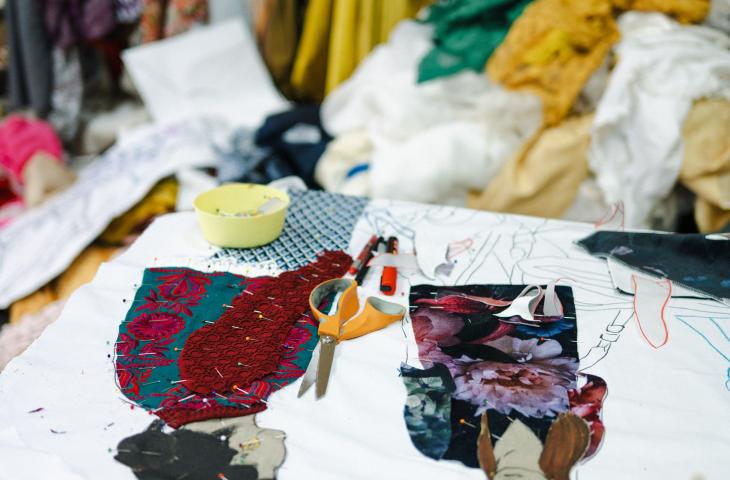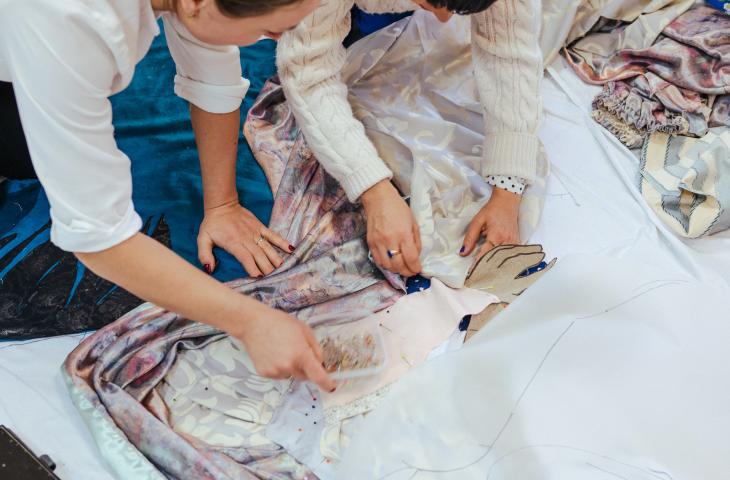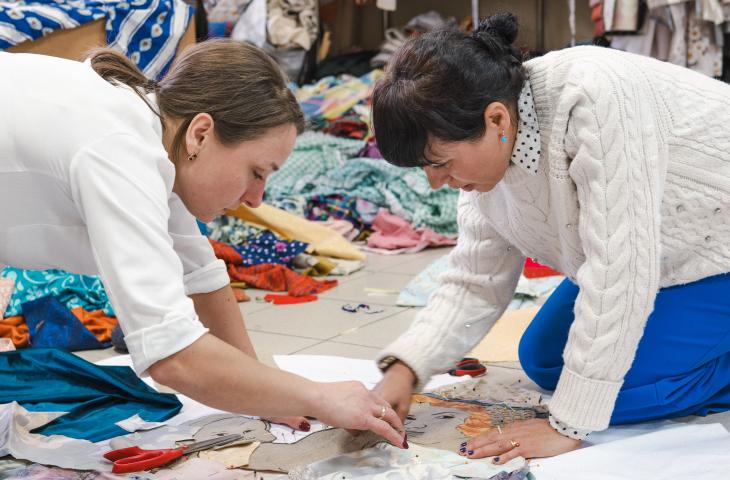Malgorzata Mirga-Tas
09.05.25 − 30.06.25

Małgorzata Mirga-Tas brings forgotten voices to life
Starting from May 9 until June 30, 2025, visitors will have the opportunity to admire a monumental site-specific intervention within the museum's permanent collection by one of the most renowned contemporary Polish-Romani artists: Małgorzata Mirga-Tas. The exhibition, curated by Wojciech Szymański, is co-organised by the Adam Mickiewicz Institute as part of the international cultural programme of the Polish Presidency of the Council of the European Union 2025.
At this exhibition, a monumental tapestry (ca. 425 x 600 cm), made with Mirga-Tas' signature technique, will be hung in the museum's gallery of 16th-century tapestries from Brussels. With this artistic intervention, Mirga-Tas rewrites art history by redefining the role and representation of the Romani community in European visual culture.
A dialogue with the past
Małgorzata Mirga-Tas is known for her innovative approach to historical artworks, not just quoting them but reinterpreting them to question the marginal position of the Romani in European art history. She has previously done this with Jacques Callot's 17th-century prints (Out of Egypt, 2021) and frescoes from the Palazzo Schifanoia (Re-enchanting the World, Venice Biennale, 2022), among others. Her recent work at the Uffizi Gallery in Florence, where she created a new interpretation of Adoration of the Magi by Gentile da Fabriano, also follows this tradition of artistic reinterpretation.
Revaluing Romani heritage
For her intervention in Brussels, Mirga-Tas draws on The Story of Jacob, a series of tapestries designed by Bernard van Orley and made in the studio of Willem de Kempeneer in the 16th century. These carpets are extraordinary historical works in which Romani women and children were used as models, but without explicit recognition in art history. By including her own work in this series, Mirga-Tas places these often ignored figures at the centre of the visual narrative.
The new tapestry temporarily replaces one of the eight original pieces of The Story of Jacob and retains the traditional structure, including the main scene, the three-part border and a cartouche with text. By interweaving contemporary Romani portraits, drawn from the personal photo archive of the artist and her family, with the historical images, a dynamic dialogue between past and present is created. The biblical narrative of The Story of Jacob is thus transferred to the modern context and offers a critical perspective on the contemporary migration and minority policies in the European Union.
A work of art that emancipates
This intervention in the Brussels museum context constitutes a powerful statement on the representation of minorities in art history. Whereas the original museum narrative focused on artists, patrons and collectors, Mirga-Tas now gives the portrayed Romani models a central role. Her work is a form of emancipation, an artistic act of reconquest and a call for a more inclusive view of art and history.
This exhibition is co-organized by the Adam Mickiewicz Institute and co-financed by the Ministry of Culture and National Heritage of Poland.
Buy your ticket




